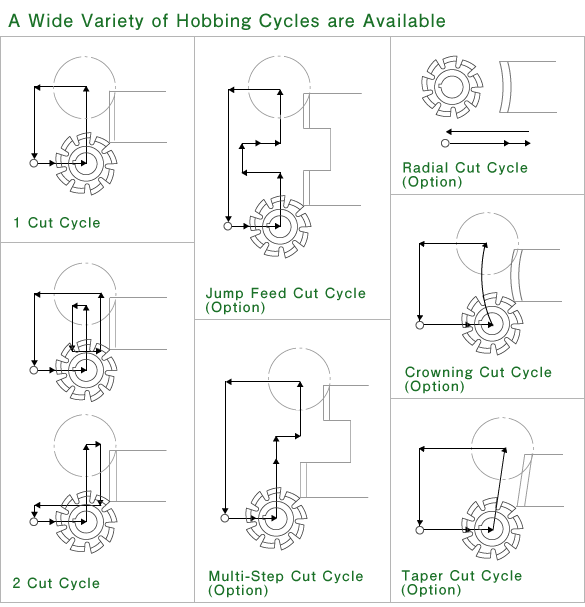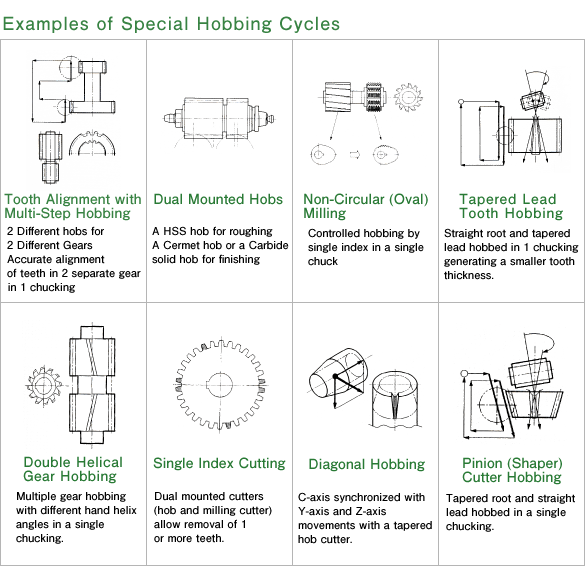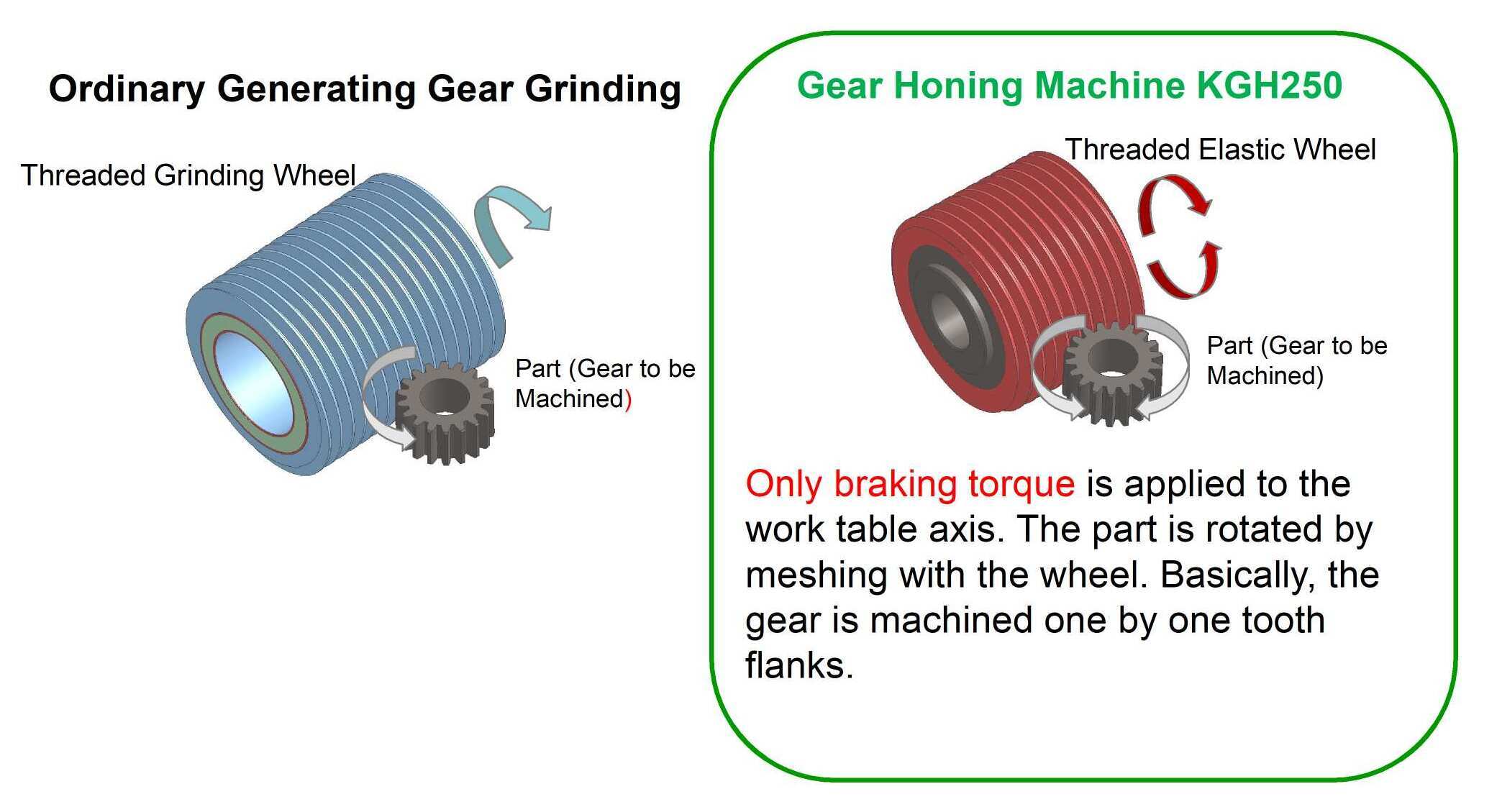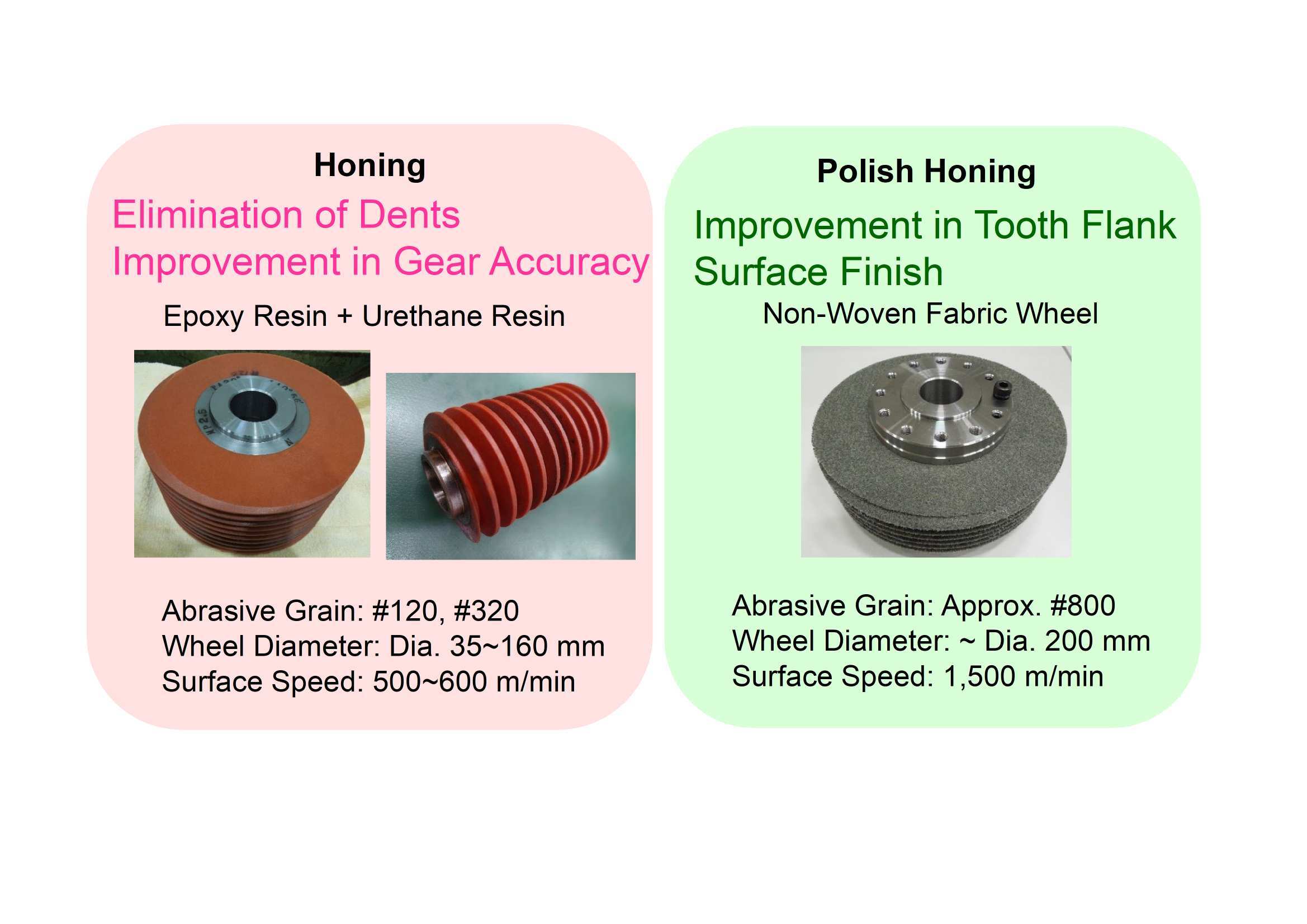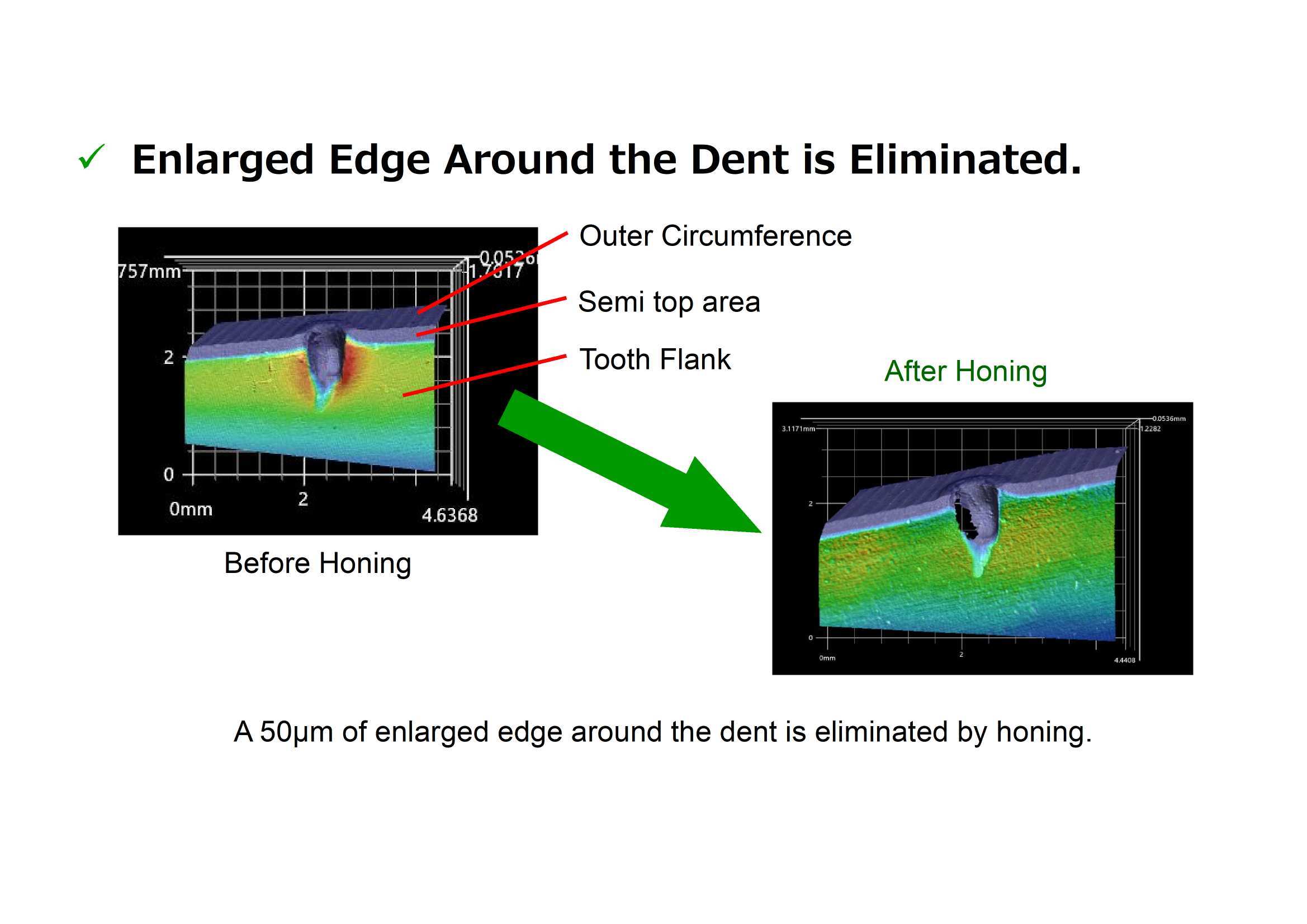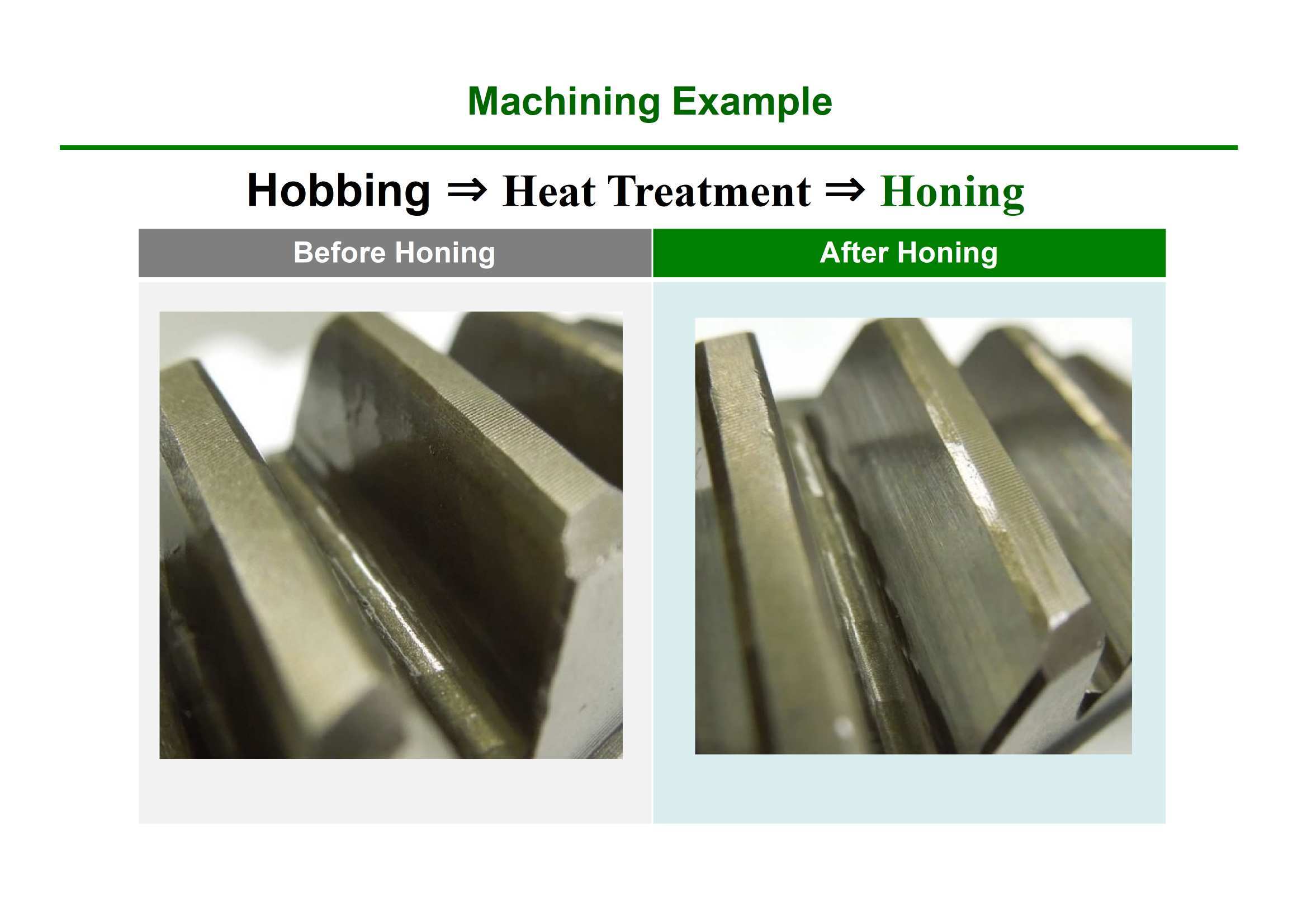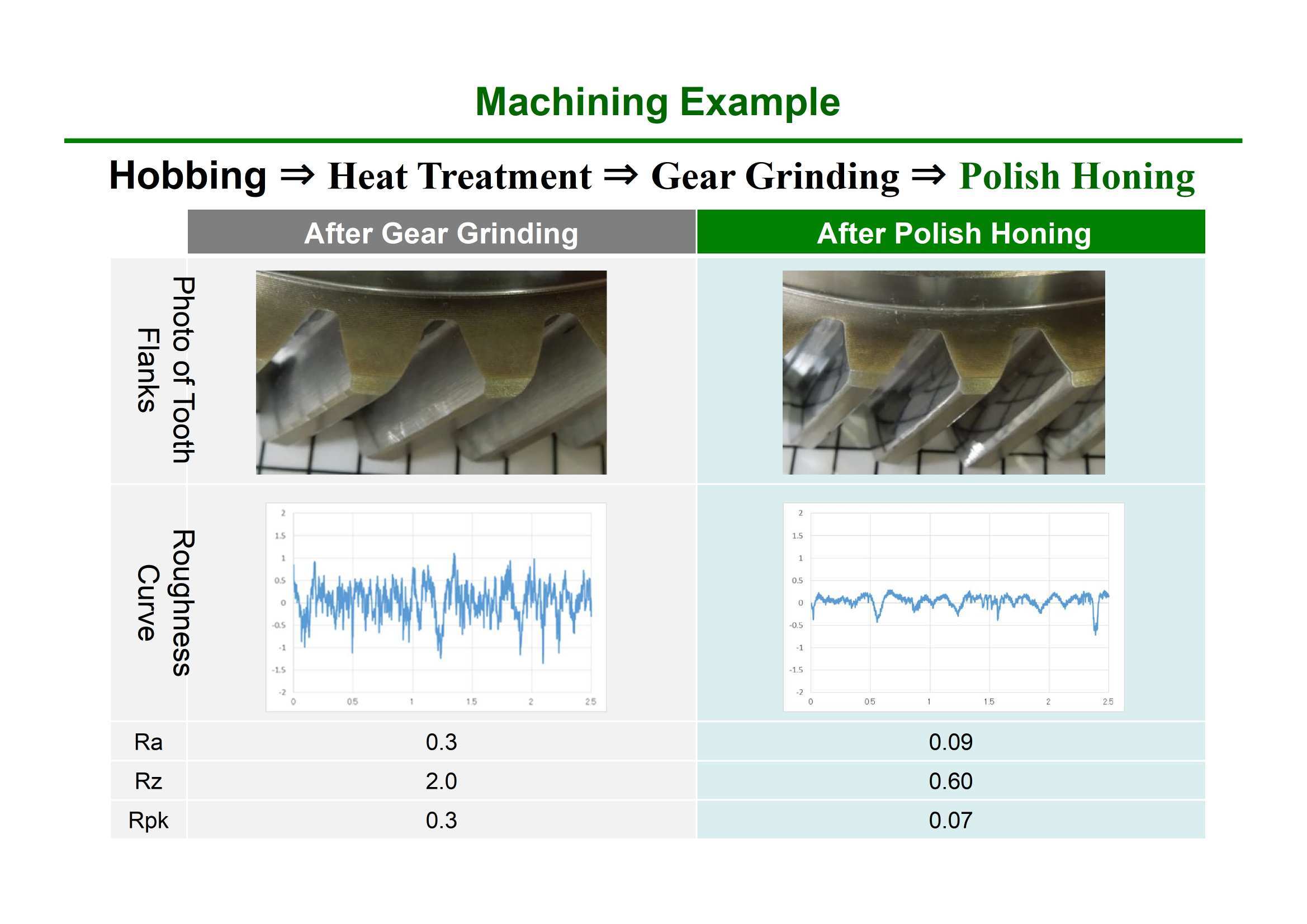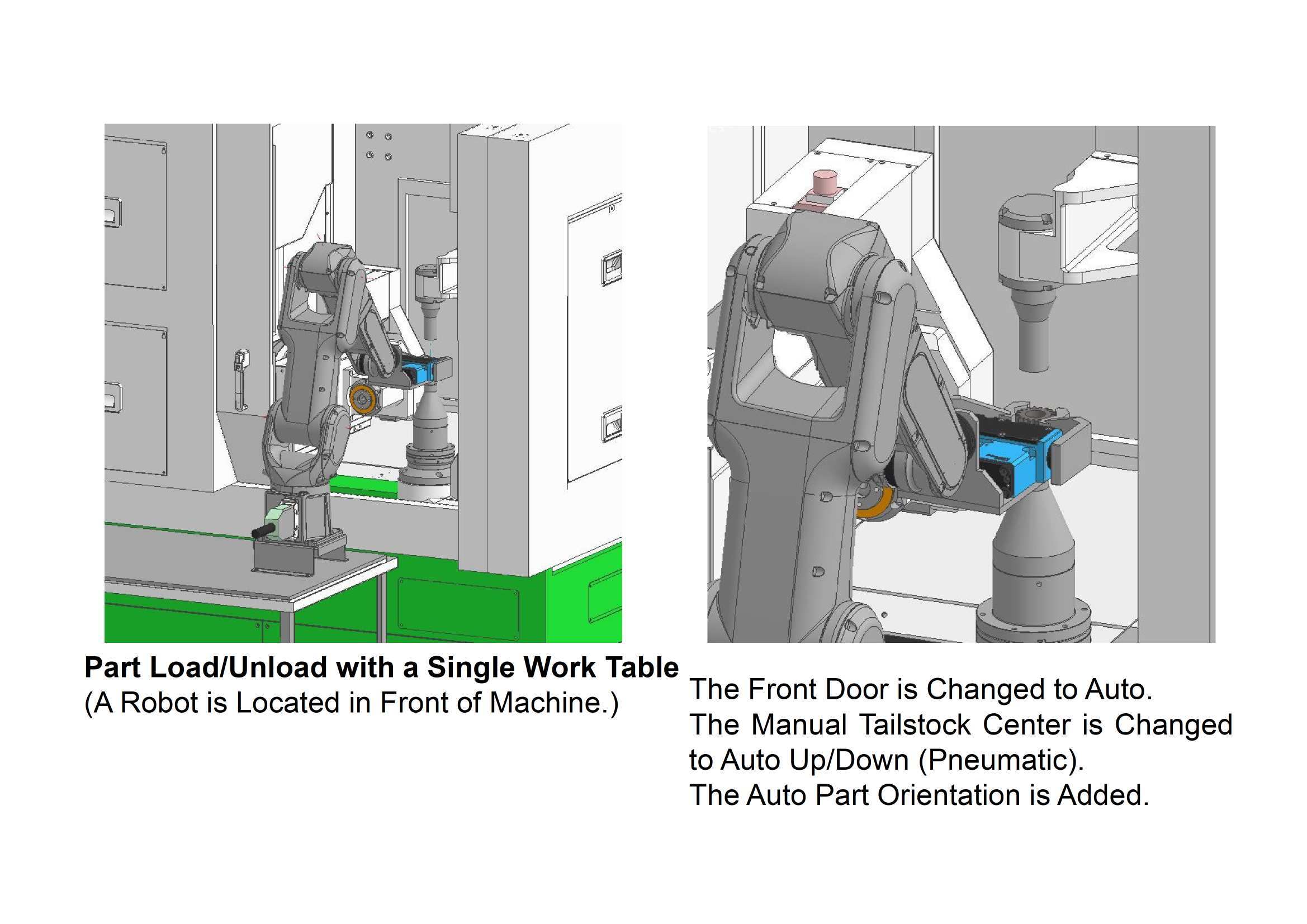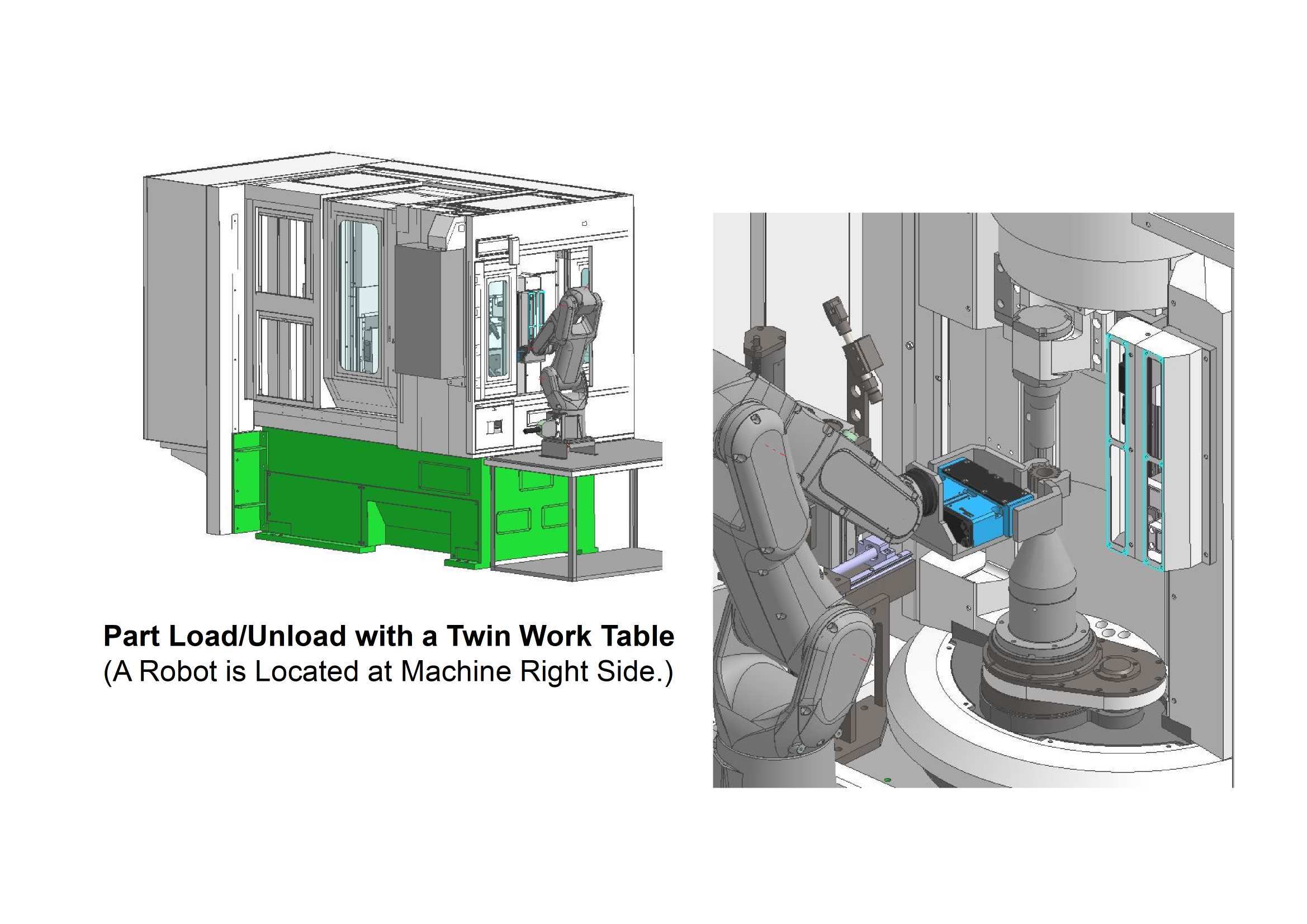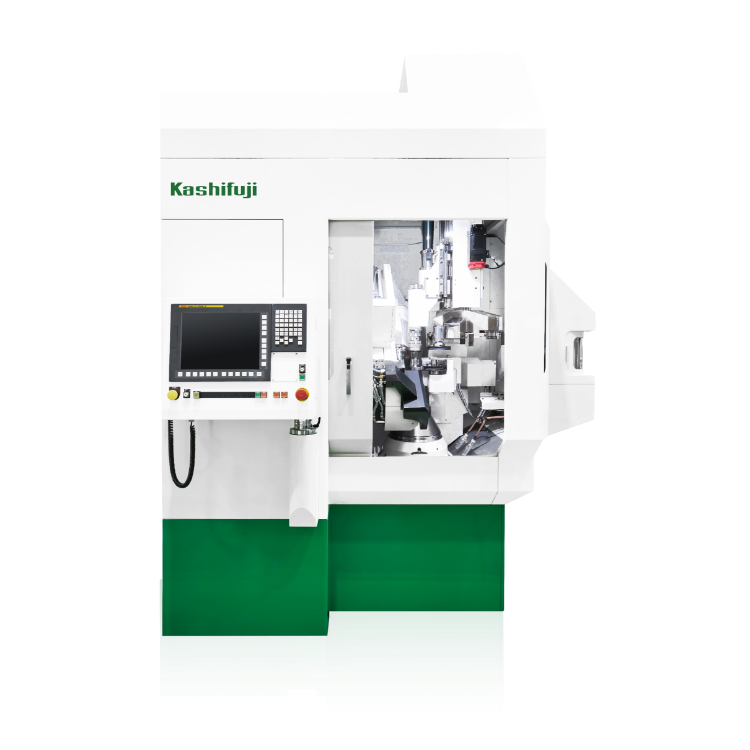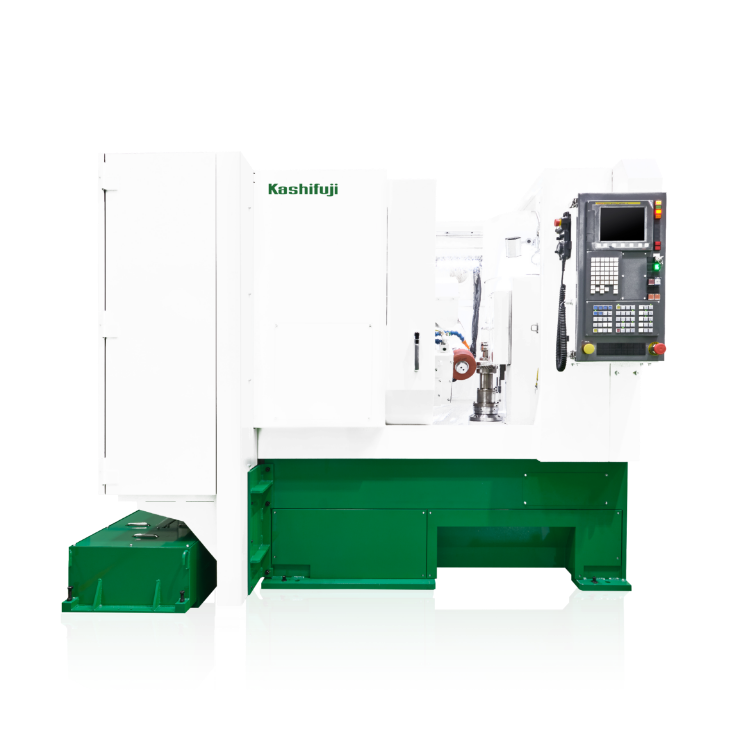

Gear Flank Finisher
KGH250
Simple & Easy Finishing of Gear Flanks
- Max. Workpiece Diameter
- 250mm
- Max. Workpiece Module
- 4
Typical Parts Hobbed
・ Spur Gear
・ Helical Gear
・ Shaft Gear etc.
Features
On the KGH250, “Elimination of the enlarged edges around dents”, “Improvement in gear accuracy” and “Improvement in tooth flank surface finish” can be achieved simply and reasonably. In typically gear honing, a continuous generating grinding process by a threaded grinding worm with high-precision synchronous rotation of the wheel and part is required. However, in our gear honing process, a threaded elastic wheel is just engaged with a part, while braking torque is applied to the work table axis. The part is rotated by meshing with the wheel rotation, and is machined one by one tooth flanks. Unlike gear grinding, the tooth flank shape cannot be modified, but the simple mechanical structure allows inexpensive gear finishing.
Compatible with a Variety of Wheels
The maximum RPM of the wheel spindle is 6,000 rpm. Other than the hones manufactured by Kashifuji, common commercial resin-made wheels or non-woven fabric wheels etc. can be used.
When Using A Hone Manufactured by Kashifuji
It is possible to remove the enlarged edges around the dent which cause abnormal noise and to eliminate the feed marks by hobbing.
When Using A Non-Woven Fabric wheel, etc.
Improvement of surface finish after gear grinding can be achieved, and improvement of gear surface pressure strength and reduction of high-order noise can be accomplished.
No Hydraulic Pressure is Required
By using an air-hydro booster, we have eliminated the need for a Hydraulic Unit. By eliminating the need for a hydraulic unit, maintenance of the hydraulic unit and use of hydraulic oil are eliminated.
Long Shaft Parts can be Machined (Optional Specifications)
Long shaft parts such as motor shafts can also be machined with high column and high support specifications.
Compatible with Automation (Optional Specifications)
By automating the tailstock arm and part orientation method, it is possible to load/unload a part automatically using a robot etc. In addition, with the twin work table specification, part change, part clamp and part orientation can be performed outside the machine to reduce machine idle time.
Specifications
-
Specs
- Max. Workpiece Diameter
-
250mm
- Max. Module
-
4
- Max. axial feed travel
-
230mm
- Max. Tool Size: Diameter x Length
-
200 × 100 mm
- Max. Cutter shift travel
-
100mm
- Table Max brake torque
-
3.2Nm
- Weight
-
3000kg
-
Floor Space: Length x Width x Height
- Type A
-
2030×1850×2295mm
- Type B
-
2395×1565×2295mm
Product Catalog
You can download the PDF data of product catalogs by adding the desired catalog to the list and filling out the form at each download link.
-
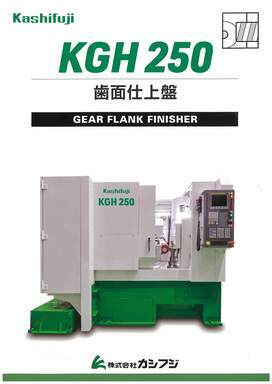

KGH250
downloadIf you want to view other catalogs or download multiple catalogs, visit the
catalog download page.
Inquiries about This Product
We are dedicated to a fast response to your request, and will make every attempt to respond in a timely manner. Requests received on Holidays or Weekends will be handled on the next business day in most cases.
-
Contact by E-mail
You can e-mail us through the forms below.
Contact FormSSL-EnabledAll your personal information entered into the forms is safely protected using a secure VeriSign SSL encryption session.
-
Contact by Phone
Head Quarters Overseas Sales Dept.+81-75-661-5271
Hours : Monday ~ Friday, 8:00 a.m. ~ 16:30 p.m. (Japan)
(Except for New Year’s, National, Summer and other Company Holidays) -
Contact by FAX
Head Quarters Overseas Sales Dept.+81-75-661-5270
Please use the FAX sheet below.
Product and Other Inquiries Request for Quotation for Spare Parts or an Order for Spare Parts
Vertical Hob Machine
Changing Fixtures, Hob Cutters or Workpieces (manual loading) is far simpler and faster than in a horizontal hobber as compared to a vertical hobber. As the workpiece /fixture are positioned vertically, they are very easy to exchange and accurately mount. The Hob Head of a vertical hobber allows great accessibility to the work table/tooling area and peripheral equipment (auto loader, transfer unit etc.) can be added without reducing operability!
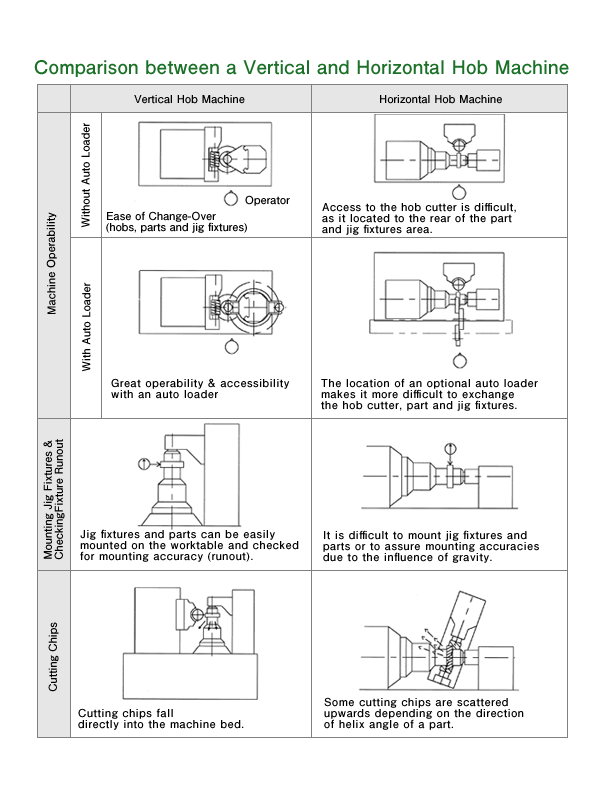
Hand Scraped Guideways
Kashifuji hand scrapes the guideways on all its hobbing machines to create a platform that dampens and absorbs the intermittent cutting forces that are inherent to hobbing process. This feature allows many years of use while still maintaining superb hobbing accuracies.
Generally, machining has limited achievable accuracies due to friction created distortions and/or internal stress relief produced during the machining process. Variations of temperature and humidity during the machine process can also reduce accuracy. Kashifuji utilizes a hand scraped surface finish to assure highly accurate guideways that are not possible by any machining/grinding process.
Hand Scraping is a finish processing method that makes the guideways extremely accurate with an ideal flatness and straightness by manually removing metal in extremely small amount (1~3 micro meters) by the use of a hand tool called a "Scraper". This hand tool has a carbide tipped single edge blade with a blunt angle. This tool is used to relieve the surface tension (create numerous, evenly distributed small, shallow dips or reliefs) in the guideway surfaces. Scraping produces a very flat surface, and the "shallow divots" retain oil which creates smooth sliding surfaces while reducing wear.
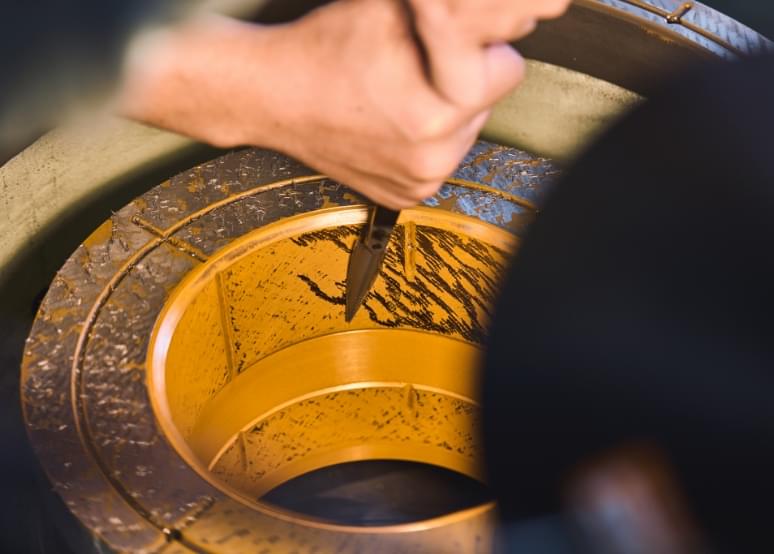
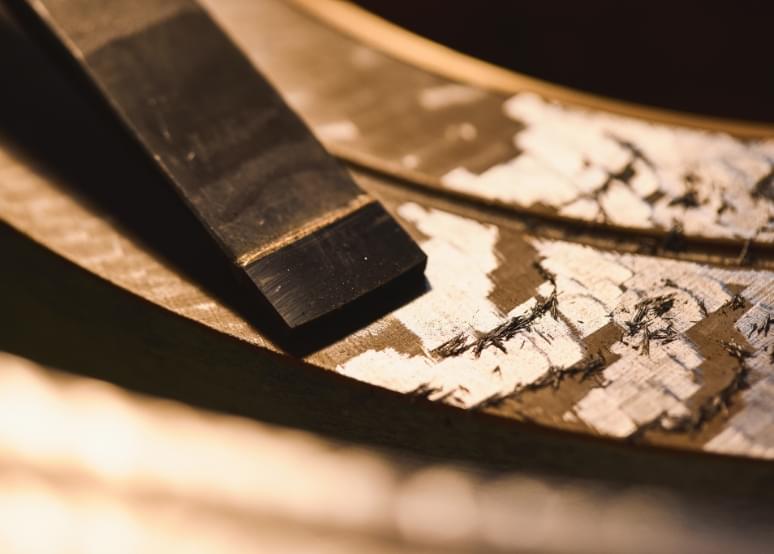
Hand scraping is a labor intensive process. The guideway surfaces are painted with a “dye” then rubbed with a reference straight edge, the dye collects on the highspots. The highspots are then removed by “hand scrapping”. This process (applying dye, rubbing & scrapping) is continually repeated until approximately 30% of the guideway surface is “relieved” producing ~70% bearing surface. This process produces an extreme flatness.
Hand scraping is referred to as a "Master's Skill". Kashifuji's skilled craftsmen are able to make accurate micro-meter scraping marks compensating for variations caused by material or temperatures changes. The "scraping pattern" produced, is often referred to as an "art form", and is unique to each craftsman. It takes many years of tedious, difficult work to acquire the experience & skill to become an accomplished Kashifuji "Scraper".
Zero Backlash Table(Work Table Backlash Eliminator)
Kashiufji designed and developed a hydraulically controlled split worm Work Table Backlash Eliminator.
This device creates a Zero Backlash condition for the work table under all cutting conditions.
The backlash eliminator suppresses work table vibrations assuring smooth and highly accurate work table rotation. The rotational accuracy of the work table will not degrade with use, as the device is self-adjusting (maintenance-free).
The backlash eliminator allows consistency in hobbing accuracies especially when hobbing large pitch gears, hobbing with a carbide skiving hob cutter and opposite hand hobbing (lead angle of a hob cutter is opposite of the helix angle of the part).
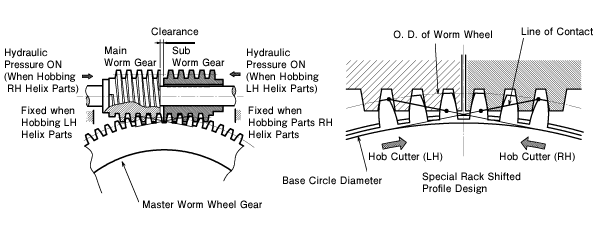
Automation
Numerous styles and types of auto loaders, conveyors or part stockers are available for automatic part transfer. All loader design are labor saving and increase efficiency.
Basic 2-Arm Auto Loader(KN80, KN152)
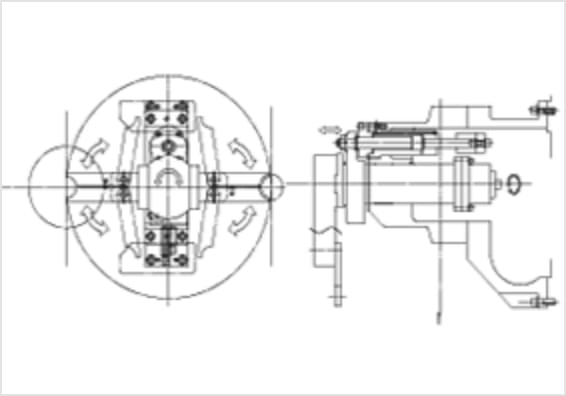
Basic Ring Loader
(KE201/251、KA220/400)
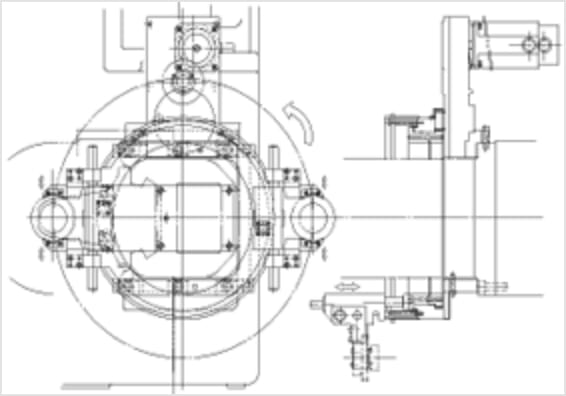
Transfer Example for Flat Gears
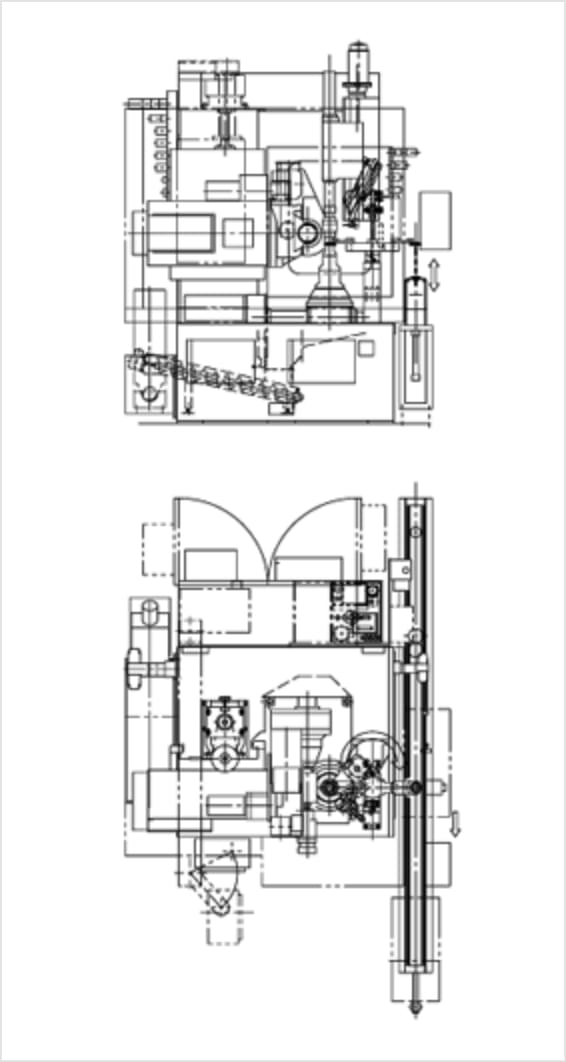
Transfer Example for Flat Gears
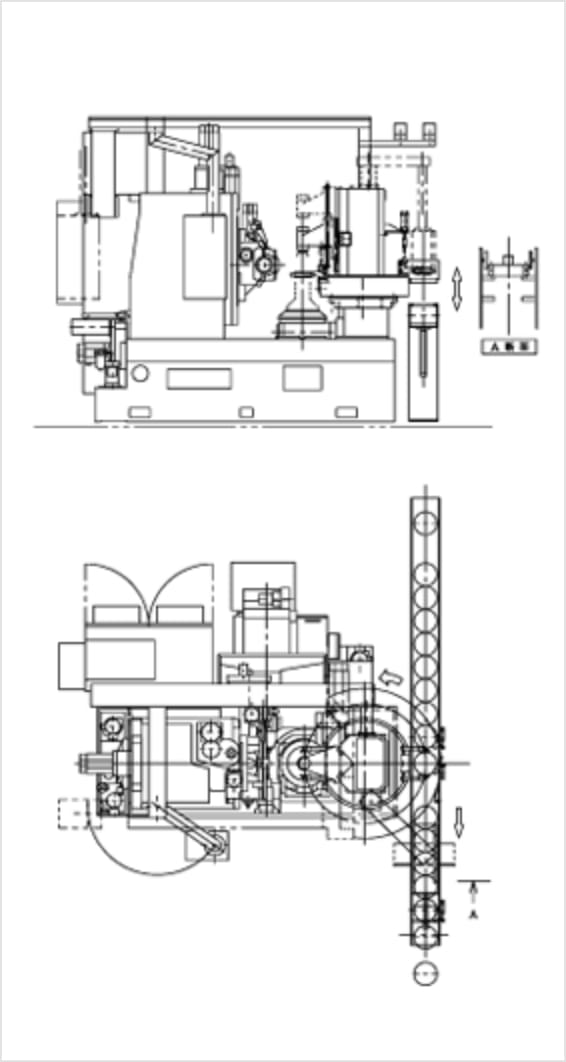
Transfer Example for Shaft Gears
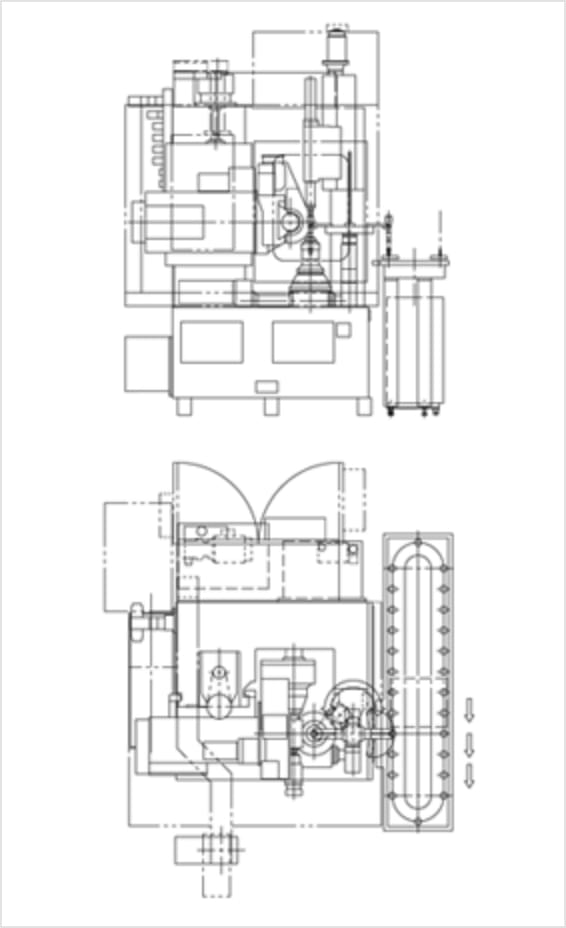
Transfer Example for Shaft Gears
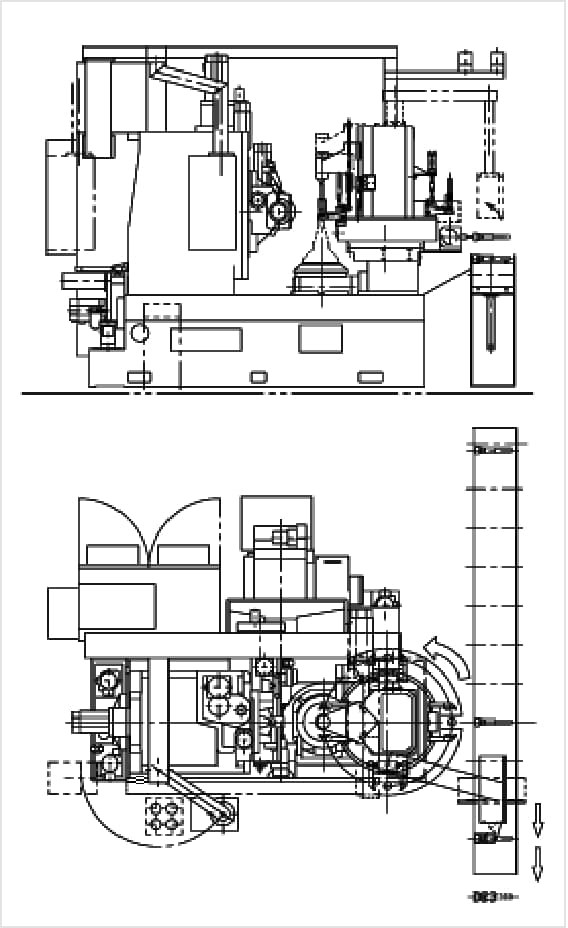
In-machine chamfering unit (optional specifications)
<Stock removal process using a chamfering cutter>
The use of an auto part loader device enables chamfering and deburring during the hobbing process. By effectively using the open space of the machine and by making the chamfering tool axis and the deburring tool axis independent, it is easy to change / adjust the tooling from the machine front operation side. In addition, the combination of hobbing, chamfering and deburring reduces the line length and cycle time.
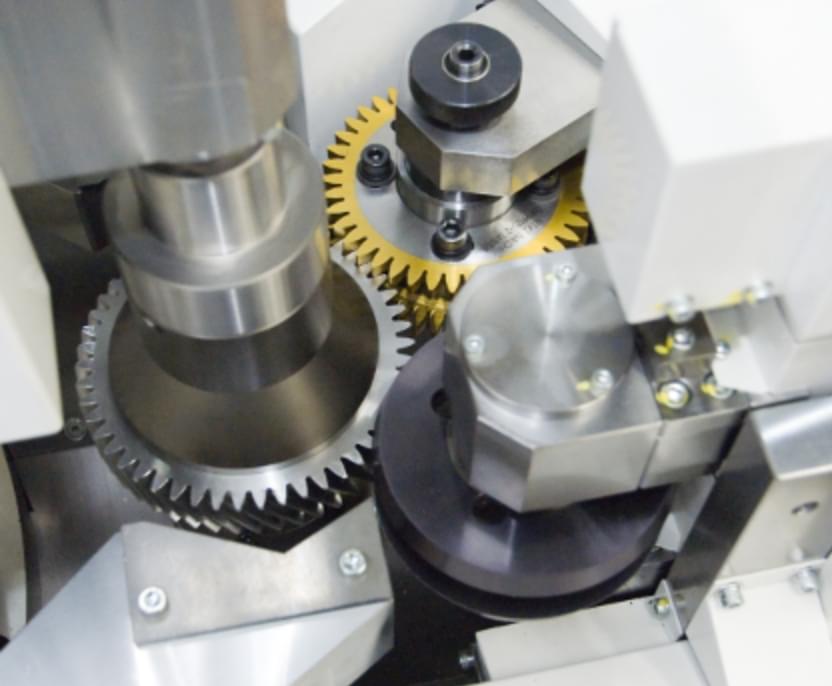
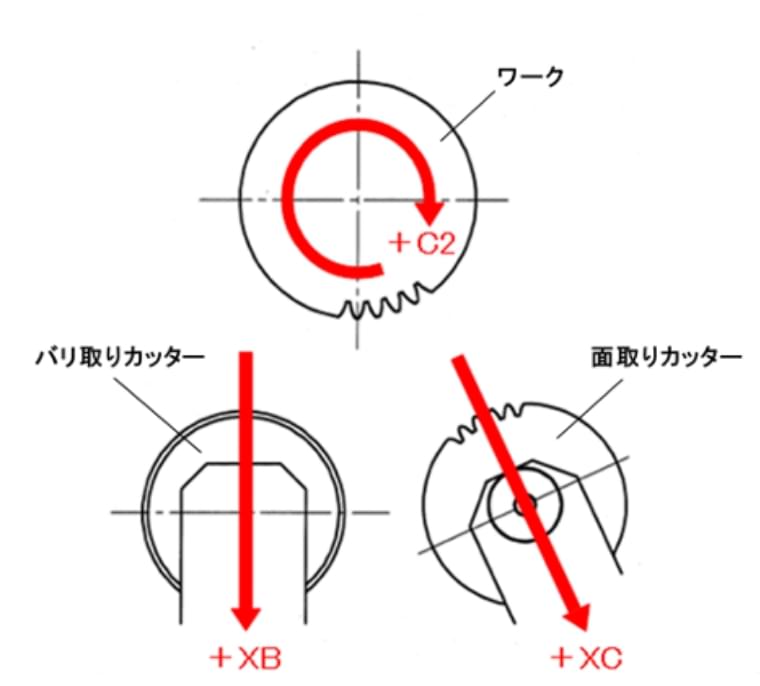
By installing a chamfering device underneath the hob head, it is possible to chamfer the part in the tooling area after hobbing and deburr the part in the open space. Additionally, the secondary burrs caused by deburring can be removed by re-hobbing. The removal of secondary burrs prevents the tooth flanks from getting damaged due to the hardened secondary burrs in the finishing processes such as gear grinding or honing, contributing to improved tool life. The combination of hobbing, chamfering and deburring reduces the line length. Also, it is possible to process a shaft gear.
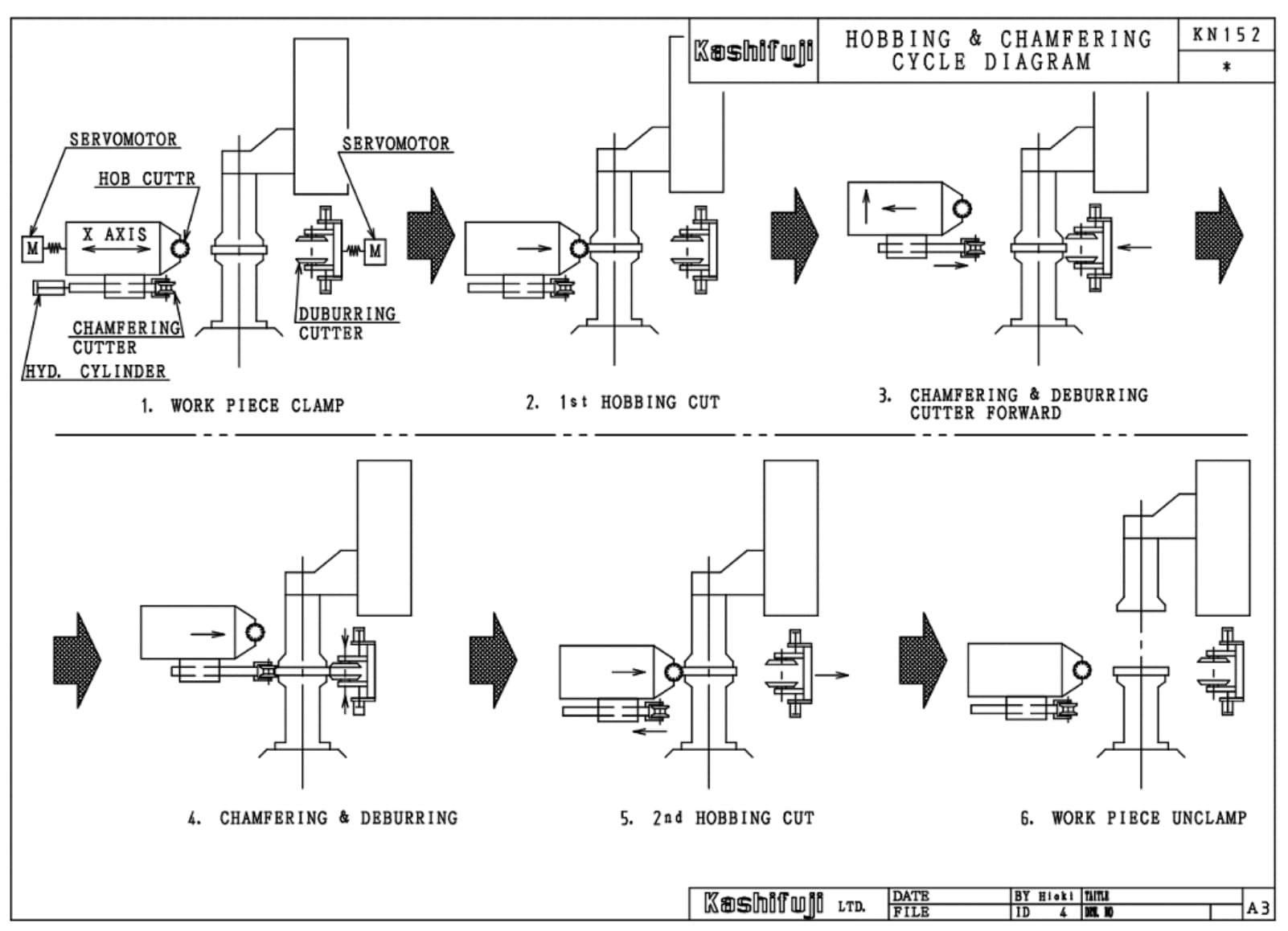
<Milling Method by tracing using a carbide rotarty end mill>
The use of an auto part loader device enables chamfering during the hobbing process. Using the machine open space effectively, the rotating carbide end mills lightly touch the rotating part allowing chamfering for both top and bottom ends of the part. Chamfering is possible using the same rotarty end mill even if the part type is chgangred.
Hard Hobbing
Hard Hobbing is a finish hobbing process for hardened gears.
There are two kinds of Hard Hobbing processes that use carbide hobs. One is "Finish Hobbing" in which hardened gears are "finished" after the initial tooth cutting. The other is "Hardened Solid Gear Hobbing" where hardened solid gear blanks are finished hobbed.
Kashifuji has developed an Auto Part Orientation Device utilizing a special non-contact sensor that quickly and accurately orientates gear teeth to the hob tool.
Finish Hobbing
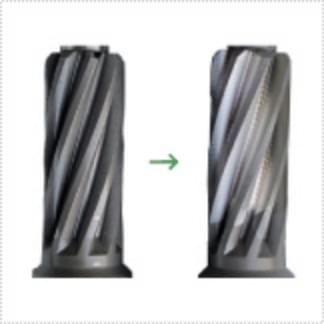
Hardened Solid Gear Hobbing
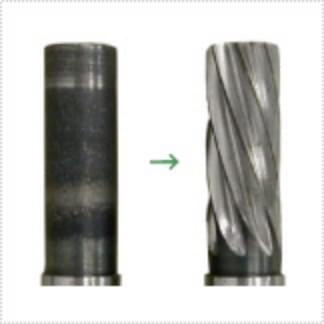
Auto Part Orientation Device
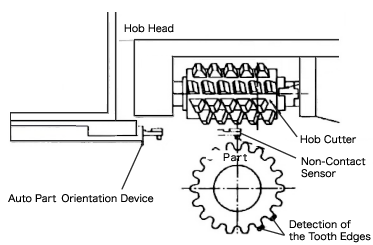
Programming
Programs are created by only inputting part gear data, hob data and cutting conditions. After the completion of the programs, hobbing will be automatically performed by selecting the part number.
Optional crowning, relieving and/or taper hobbing cycles are easily performed. Simple and easy-to-operate hobbing programs are available for a wide variety of production situations, from mass production to special prototype hobbing.
